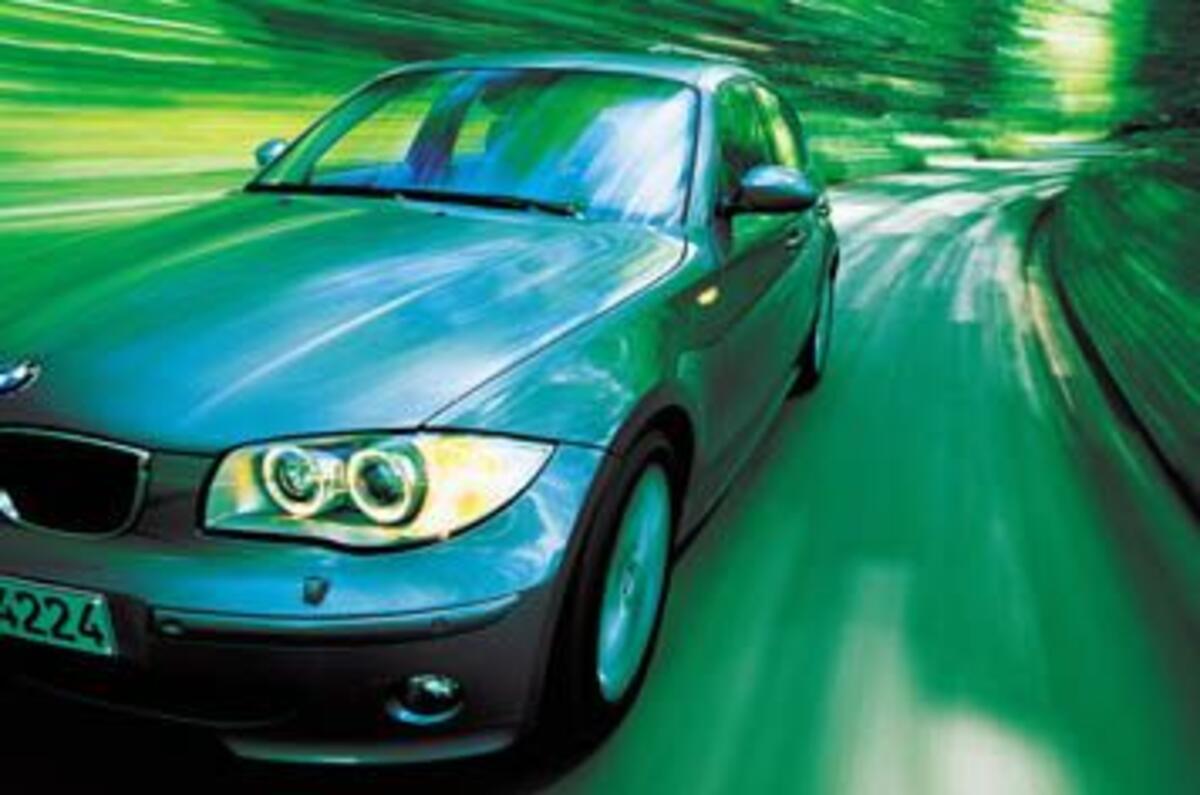‘The 1-series is not a space miracle. It’s not intended to be – that would sacrifice too much driver appeal.’
Exactly. In his neat summary, Gerd Schuster, project leader for BMW’s new baby, perfectly captures the essential point of 2004’s most intriguing new Focus/Golf-class car.Proper sporting cars are rear-wheel drive; BMW set out to build a smaller BMW. That – good (mostly very good) and bad – is exactly what they’ve achieved. The 1-series was never going to be anything other than front-engine, rear-drive – the layout that clarifies Schuster’s description.
The 1-series’ total character – the way it drives, the body’s proportions, the tight rear-seat compartment – all stem directly from the longitudinal positioning of the engine and the decision to adopt rear-wheel drive on a hatchback. To find another ‘new’ small car that goes against the (until now) universal trend to transverse-mounted engine/front-drive layout, you must go back to the first Mazda 323 from the late ’70s.
This is BMW being BMW: confident that, in a class that sells 12 million cars a year globally, there are sure to be 150,000-plus buyers delighted to compromise packaging efficiency for the sake of intense driver appeal. Especially in a car wearing a premium badge.
As Audi discovered with the A3 (seen by Munich as the 1-series’ closest rival, along with high-end VW Golfs and Alfa’s 147) price is comparatively unimportant on compact prestige models. When the 1-series goes on sale across the world on 18 September, there are going to be plenty of customers prepared to pay well over 20 grand for the privilege. The humble 114bhp 1.6-litre 116i starts at £15,690 (£180 over the equivalent A3), the 120i Sport tested sells for £20,170 and the 120d SE £20,800, all without dipping in to the extensive, too-often essential, options list.
Still, to the person behind the wheel, it’s a no-brainer concept. The 120i drives like a more agile, more refined, smaller 318i. And that means altogether differently to the competition. You won’t find any front-drive rival with the same level of chassis poise (no, not even the Ford Focus), the same consistency of weighting of major controls and, best of all, steering that is as pure, as linear, and utterly unscathed by torquesteer. Simply because there is no torquesteer. Impossible. ‘The axle that steers should not have the burden of also powering the car,’ says Schuster, ignoring for a moment that BMW is also responsible for the front-drive Mini.
Achieving BMW’s traditional 50/50 weight distribution meant moving the engine rearwards, almost behind the front axle line, and shifting the battery to the boot floor, where the spare wheel normally sits. Except there isn’t one: all 1-series were conceived around run-flat tyres.
The cabin is long, the roofline extending the rear overhang well beyond the hatchback norm. The 1-series gets the longest wheelbase – 2660mm (up 80mm on the new Golf, and just 65mm shy of the 3-series) – in its class. Likewise, the overall length (at 4227mm, 23mm longer than the Golf), but the long-bonnet styling and an intrusive transmission tunnel eat into rear-seat space and restrict the fuel tank to a marginal 50 litres.
Most of the chassis elements are shared with next year’s 3-series: aluminium front struts with an alloy sub-frame, new five-link steel rear suspension, a stability control system that can be turned off and slightly more powerful 1.6- and 2.0-litre petrol and turbodiesel engines. A 1.8 will arrive in December. Brakes are by discs all round and the 120i/d and 118d get a choice of six-speed manual or automatic gearboxes – the 116i is five-speed manual only.



























Add your comment